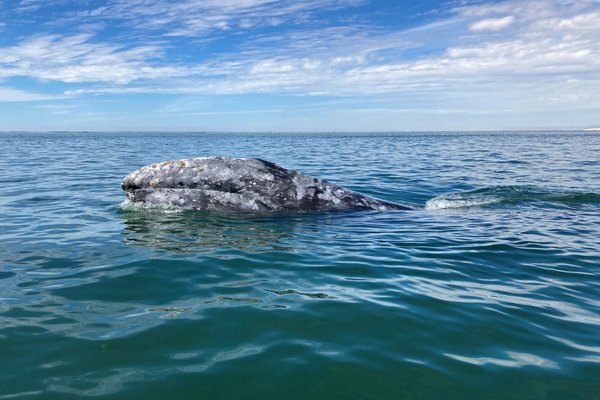Mexico
Whale Sanctuary of El Vizcaino
The Whale Sanctuary of El Vizcaino comprises the breeding grounds for the North Pacific Grey Whale and also protects other important species.
The Grey Whale yearly travels in small groups between feeding and breeding grounds over a distance of 16,000-22,000 km. They use the shallow, well-protected lagoons of Ojo de Liebre and San Ignacio to mate, breed and calve. The area also is productive for fish and sees an abundance of wintering bird species.
Community Perspective: The season lasts from January to mid-March. You can choose between Guerrero Negro (for Ojo de Liebre) or San Ignacio (for San Ignacio Lagoon) to use as a base: from there, trips on small boats will be on offer to view the whales.
Site Info
Official Information
- Full Name
- Whale Sanctuary of El Vizcaino (ID: 554)
- Country
- Mexico
- Status
-
Inscribed 1993
Site history
History of Whale Sanctuary of El Vizcaino
- 1993: Inscribed
- Inscribed
- 1990: Deferred
- Only a part might be of Universal Value -rest should be Biosphere reserve. Possible adding a cultural dimension to criteria??
- Type
- Natural
- Criteria
- x
Links
- UNESCO
- whc.unesco.org
- Official
-
- guerreronegro.org — Reserva de la Biósfera el Vizcaíno
- Related
-
- parkswatch.org — Profile on ParksWatch
All Links
UNESCO.org
- whc.unesco.org — whc.unesco.org/
Official Website
- guerreronegro.org — Reserva de la Biósfera el Vizcaíno
Related Resources
- parkswatch.org — Profile on ParksWatch
News Article
- Jan. 10, 2014 latinpost.com — Conjoined Gray Whale Twin Fetuses Discovered in Laguna Ojo de Liebre
Community Information
- Community Category
- Natural landscape: Marine and Coastal
Travel Information
Seasonal WHS
Recent Connections
-
Oceanic Dolphins
Common Bottlenose (UNEP WCMC)
-
Pelicans
American White -
Centres of Plant Diversity
NA38 Sonoran Desert, including Baja Cal…
Connections of Whale Sanctuary of El Vizcaino
- Geography
-
-
Pacific Ocean
-
Contiguous National Sites
Abuts Rock Paintings of Sierra San Francisco -
Marine sites
370000h. All (almost?) of this area is marine. But the documentation is difficult to assess since it still includes the massive terrestrial area originally proposed for inclusion but which was excluded following the Bureau meeting in 1993 -
Gulf of California
-
- Trivia
-
-
On Banknotes
500 peso note of G-series (issued 2018) shows Coastal, marine and insular ecosystems represented by the gray whale and El Vizcaíno Biosphere Reserve
-
- Ecology
-
-
Turtles and tortoises
Habitat of green turtle, hawksbill turtle, and olive ridley turtle
-
Mammal Migrations
El Vizcaino and Wrangel island are the northern and southern "ends" of the Grey whale migration -
High-Biodiversity Wilderness Area
North American Deserts, Southwest United States and Mexico -
Bird Migrations
OUV: The surrounding wetlands attract an extraordinary diversity and abundance of resident and migratory bird species with several hundreds of thousands of wintering birds (around Laguna de San lgnacio and Ojo de Liebre, Pacific Flyway) -
Seals
Harbor Seal -
Mangroves
-
Critically endangered fauna species
Hawksbill TurtleSee ocean.si.edu
-
Swamps and Marshes
"a complex mosaic of wetlands, marshes, halophytes, dunes and desert habitats" (OUV) -
Whales
"the most important breeding grounds of the Eastern subpopulation of the North Pacific Grey Whale" (OUV) -
Pelicans
American White -
Oceanic Dolphins
Common Bottlenose (UNEP WCMC)
-
Lagoons
two lagoons - Ojo de Liebre and San Ignacio
-
- World Heritage Process
-
-
Inscribed on a single criterion only
x. to contain the most important and significant natural habitats for in-situ conservation of biological diversity, including those containing threatened species of outstanding universal value from the point of view of science or conservation.
-
- Human Activity
-
-
Petroglyphs
There are a number of prehistoric sites of importance on the peninsula, as well as petroglyphs, wall paintings and ancient ruined structures
-
- WHS on Other Lists
-
-
World Biosphere Reserves
Located in El Vizcaino (1993) -
Centres of Plant Diversity
NA38 Sonoran Desert, including Baja California - "The drier terrestrial areas belong to the Sonoran Desert, well-known for its remarkably diverse flora and fauna and a high degree of endemism." -
IUCN Green List
El Vizcaino Biosphere Reserve -
Ramsar Wetlands
Laguna San Ignacio, 2004
-
- Timeline
-
-
Pliocene
Despite this bias, diagnostic gray whale fossils have been reported from both Pleistocene and late Pliocene marine strata of the North Pacific basin, attesting to the origin of this lineage prior to the onset of Northern Hemisphere glaciation in the late Pliocene.
-
- Visiting conditions
-
-
Seasonal WHS
Whales are only present from Jan - mid March
-
- WHS Names
-
-
Protection of a single named species
Whale: "The lagoons are recognized as the World's most important place for the reproduction of the once endangered Eastern subpopulation of the North Pacific Grey Whale." (OUV)
-
News
- latinpost.com 01/10/2014
- Conjoined Gray Whale Twin Fetuses …
Recent Visitors
Visitors of Whale Sanctuary of El Vizcaino
- Alberto Rodriguez Gutierrez
- Atila Ege
- Clyde
- Daniela Hohmann
- Delphine Delaunay
- Els Slots
- Eric Lurio
- Iain Jackson
- Jarek Pokrzywnicki
- Jens
- KeithBailey
- Kelly Rogers
- Kjlauer
- Kurt Lauer
- Lara Adler
- Lucas Del Puppo
- Luis Filipe Gaspar
- Lukasz Palczewski
- Michael Novins
- Mihai Dascalu
- MMM
- Nihal Ege
- Roger Ourset
- Roman Bruehwiler
- Stanislaw Warwas
- takanenohana
- Tim Allen
- Traveling Girl
- Waxwing
- ZCTLife
- Zoë Sheng
Community Reviews
Show full reviews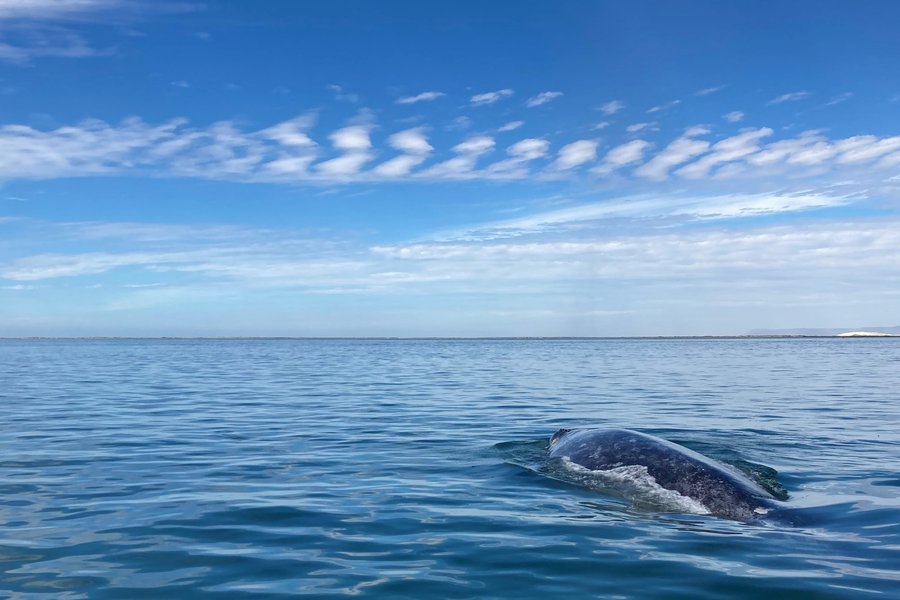
Every winter, gray whales enter the bays on the Pacific side of the Baja peninsula to breed and rear young. The warm water is high saline and shallow enough that an adult whale can often touch bottom with their tails with their heads above the surface. Like giant hot tubs, these blue lagoons are perfect for adult whales to meet up and mate. Like a kiddie pool, these nurseries are perfect for babies to practice holding their breath, to open their eyes underwater and to learn to swim. And like top rated world heritage sites, these bays—named after a Spanish explorer—are perfect for tourists to experience the best whale watching in the world, with a sizable concentration of gray whales including babies, accessible from nearby beaches in small boats, with up close encounters, even touching.
The northeast Pacific population of gray whales has been decreasing in recent years, but there are still hundreds counted here every winter. I visited in February, choosing the Ojo de Liebre (hare’s eye) lagoon. I drove from California and booked my own hotel for 2 nights, but most whale watchers book package tours including hotel accommodation in Guerrero Negro. Some stay in seasonal camps on the beach for days and go out on the water multiple times. I went out once and fortunately it was a good day with the whales.
Within 30 minutes, we boarded our small boat, motored out into the lagoon found some friendly whales and let them come up …
Keep reading 0 comments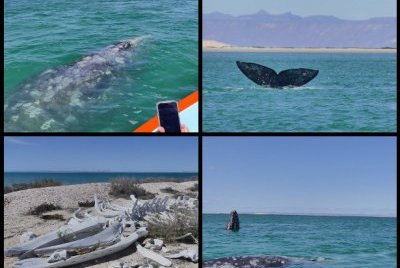
I visited this WHS in 2024. Due to its location, it is much easier to visit from the United States and/or Canada (especially overland but also by flight) than it is from Mexico City.
There are flights to Loreto (still a good 3.5-4 hours drive to the San Ignacio base) from the United States (San Francisco, Los Angeles, Dallas and Phoenix), from Canada (Calgary) and from Tijuana (Mexico) but NOT from Mexico City. Wanting to avoid 2 internal flights CDMX-Tijuana-Loreto and back, and since the rental car rates with unlimited mileage as well as domestic flight prices were significantly cheaper on my planned dates, I opted to travel to Mexico City-La Paz (a much longer 8hr drive; a very boring extra 4 hours when compared to starting from Loreto). Still, when adding up the travel time to Tijuana plus the extra costs involved, the time difference, and keeping in mind the added bonus of being able to visit the newly added Gulf of California WHS component of Balandra, I used La Paz as my southern base and San Ignacio as my northern base.
San Ignacio is still a good 1.5 hour drive away (with around 25 kilometres of dirt road driving on compacted sand and gravel; doable slowly with a standard non-4WD vehicle on a sunny day) from the San Ignacio Lagoon area where the boat tours depart from. The Ojo de Liebre Lagoon is also reachable with a further drive to Guerrero Negro and then a much …
Keep reading 0 comments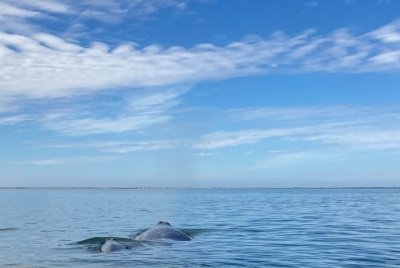
I visited the Grey whales at San Ignacio Lagoon, one of the two locations that make up the Whale Sanctuary of El Vizcaino. The B&B where I was staying (Ignacio Springs) booked the whale tour for me – beforehand I thought that you had to book as early as possible, but the lady just phoned in the night before. As always with sea-based tours: the weather & wind can cause cancellations, so it’s best to allow for a couple of days in the area (also to tick off the nearby Rock Paintings of the Sierra de San Francisco WHS, with which it even shared the initial nomination until they were wisely split up by World Heritage Bureau).
From the town of San Ignacio, which lies on Highway 1, it’s another 1-1.5 hour drive to get to the actual lagoon. The first 45km is on an easy, paved road, the last 15 on a relatively bumpy unpaved one. There’s nothing here but a few basic camps and some mudflats. The operator I used was Antonio’s Ecotours, which asks 60 USD per person for the tour. The boats can hold up to 12 people, but on mine were only 5. I was welcomed at Antonio’s, got a safety jacket fitted on and on we went in the small motorboat. The boats are only allowed to go whale watching at the mouth of the lagoon, not inside the lagoon itself as that is too shallow and would endanger the whales.
The …
Keep reading 0 comments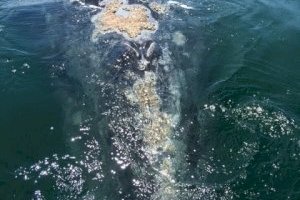
This is a site that I have visited 3 times, and, for animal lovers, it does not disappoint. I'm based in Southern California, so it's a long but do-able drive down the west side of Baja. In 2017, we drove and enjoyed the incredible "super bloom" in the desert. In March 2020, we flew from Los Angeles to Loreto, and were in the area precisely as the Covid Lockdown was occurring. The lockdown altered the last few days of our trip only.
Unfortunately, the Baja area can be challenging to find accommodations. There are no chain hotels in the central area, such as San Ignacio, which is the most centrally located for whale watching. There are some bigger places in Guerrero Negro that might be perfect for people driving down. We booked a small house through hotels.com in San Ignacio. Internet was very sketchy there and the accommodations are very basic. Also it can be difficult to plan the boating trips in advance. This can limit the pre-trip enthusiasm, because it's a long drive in from either the West or East Baja coast, and people prefer to know with certainty that they'll be getting on a boat once they get there. Somehow, it's always worked out for us.
It's a fairly long (30-45 minutes) drive to the dock from San Igancio, and about the same if you're going to the Guerrero Negro sites. The roads are dirt. There's little or no traffic. It's marked but not often.
…
Keep reading 0 comments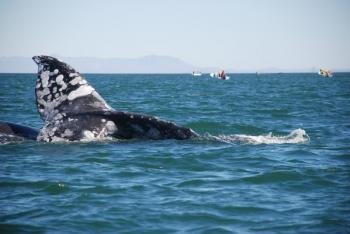
In February 2011, I took the bus from Loreto to San Ignacio, where I spent two nights at Ignacio Springs (www.ignaciosprings.com) and visited the two nearby UNESCO World Heritage Sites. On my first full day, I traveled to San Ignacio Lagoon, the only undeveloped nursery and breeding ground of the Pacific gray whale and part of the Whale Sanctuary of El Vizcaino UNESCO World Heritage Site (http://www.kuyima.com). We spent nearly two hours on the lagoon, and saw dozens of gray whales, often several at one time, some within a few feet of the panga (boat). On my second day, I visited the El Palmarito Caves, part of the Rock Paintings of Sierra de San Francisco UNESCO World Heritage Site. The trip started with a two-hour drive, mostly through an unimproved wash bed, to Rancho Santa Marta, followed by a one-hour hike and 30-minute climb up a rocky incline to the stunning cave -- due to its remoteness and difficult access the cave is not as frequently visited as some of the more accessible caves in the region, and I was the only visitor at the cave. I ended my trip in Loreto, where I stayed at La Damiana Inn, built in the 1930s (www.ladamianainn.com).
Keep reading 0 comments
This place is truly an off the beaten path treat! Although it is a bit difficult to reach, it can be easily seen along with The Rock art of San Francisco. This reserve is the winter home of more than 12,000 grey whales. They migrate here from the arctic ocean to give birth and enjoy the winter weather.
Vizcaino biosphere is best visited from Guerrero Negro, a small town about 450 miles south of San Diego in California. You can drive the entire distance on a good 2-lane highway.
The whales enter the salt lagoons in January and remain until Mid-March. The lagoons have a very high salt content (in fact, parts are a Japanese owned salt works that UNESCO worked hard to prevent expansion.) Females have their babies here because of a boost in floatation due to the saltiness. Entrance to the lagoons is strictly controlled but you can take a boat out into the lagoons for about 49 US dollars per person for 3 hours. Lots or tours are offered but you can just show up and join a small boat trip.
The boats quickly find the whales who are seemingly everywhere you look. They come right up to the boats and sometimes nudge them. The moms and babies swim together and you will assuredly see them jumping (breeching), diving, and generally playing.
There are about 7 or 8 modest hotels (don't expect much) and some great Mexican seafood restaurants in Guerrero Negro.
Keep reading 0 comments
